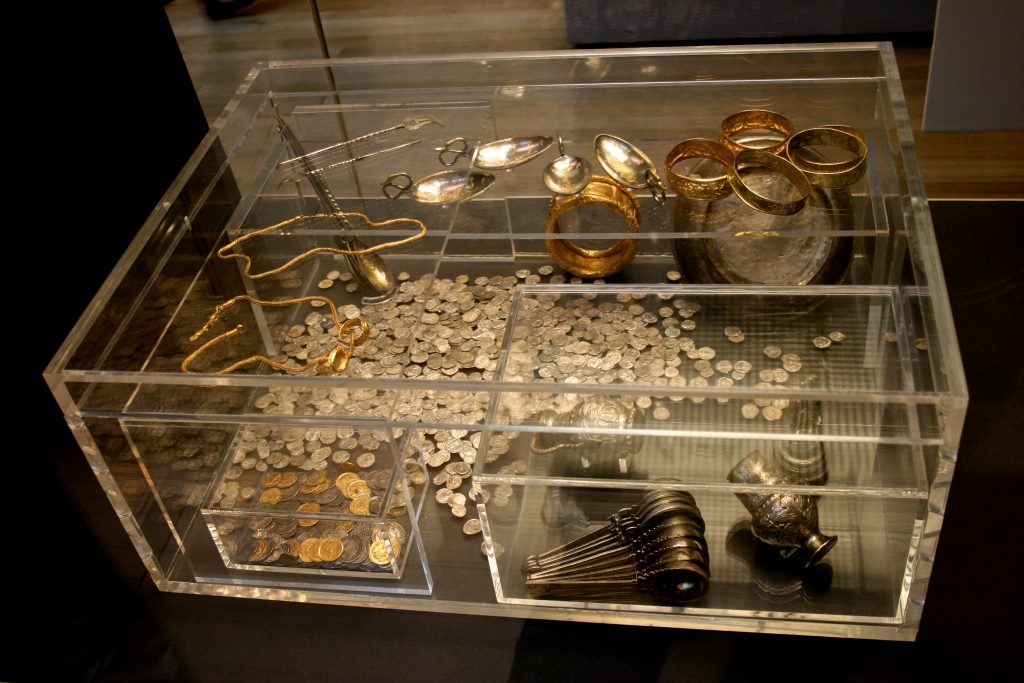
Reconstruction of the Hoxne treasure chest
Courtesy of Wikipedia
Have you ever been on a search for something you misplaced and end up finding something else of tremendous value?
Yeah, neither have we.
This is what happened on November 6, 1992, to Eric Lawes in Suffolk, England. Farmer Peter Whatling had misplaced a hammer in a field and asked his friend Eric, whom had received a metal detector as a retirement gift, to help search for it.
Who would have known this search would lead to the largest discovery of Roman empire treasure in history, known as the Hoxne Hoard!
As soon as Eric realized he discovered something important, he called the police and the local Archeological society. The next day, they very carefully uncovered the largest Roman Empire treasure that was believed to be buried in the early part of the 5th century A.D. This period of time coincides with the tremendous upheaval that was taking place in the British Isles due to the collapse of the Roman authority.
According to author and historian Sean Munger:
“What became known as the Hoxne Hoard–Hoxne’s the village it was found in, and it’s pronounced ‘Hoxon’–was a fabulous cache of treasure from the late Roman/early Byzantine era. There are 15,000 coins, about 100 spoons and ladles, 29 pieces of gold jewelry, silver vases, beakers and bowls, a pepper pot (forerunner of the pepper shaker) cast to resemble a stately woman, and, most curiously, a silver tigress emphasizing six prominent teats. The exact function of this object isn’t entirely known, though it’s suspected to be the handle of something. And yes, they did find Peter Whatling’s hammer.”
The British government generously gave Eric $1.75 million, which he split with his farmer friend that owned the land in which the treasure was discovered. This valuable treasure, as well as the famous hammer that led to the amazing find, is on display in the British museum.
Maybe one day historians will uncover the mystery of who buried this treasure and why!